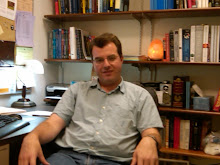Chapter 6 is largely documents and testimony from Galileo's first trial, in 1615. These documents are consistent with a distinction that a historian friend of mine drew: Galileo didn't get in trouble for heliocentric theory so much as for public statements concerning the Church's authority on astronomical questions. The testimony of the witnesses is less about heliocentrism vs. geocentrism and more about Galileo proclaiming that his heliocentric-compatible interpretation of Scripture is superior to the Church's. Also, the witnesses refer ominously to "disciples" of Galileo. They feared his theory less than his ability to persuade people to favor his teachings over those of the Church.
Chapter 6 ends with a 1616 edict adding several books to the Index of forbidden books. Nothing by Galileo was on the list, but Copernicus' work made the list. What else got banned in that year? Well, it will be no surprise that a book on Calvinism made the list (poor Puritans :( ), nor that some books on law and politics got banned. But it is amusing that a book called Scotanus Redivivus, or Erotic Commentary in Three Parts, was banned alongside Kepler. A quick Google search mostly returns pages about Galileo and Copernicus, which is rather disappointing. (Though there is a link to Fark!) I could get my freshmen more interested in physics if I did a comparative study of Copernicus' writings and those of his contemporaries.
Chapter 7 was boring, so I skipped it. Something about comets and disputes with contemporaries.
Chapter 8 is a series of excerpts from Dialogue on the Two Chief World Systems. I haven't gotten very far in that chapter, but I like this quote from his preface:
Many years ago I had occasion to say that the unsolved problem of the tides could receive some light if the earth's motion were granted. Flying from mouth to mouth, this assertion of mind has found charitable people who adopt it as a child of their own intellect.Yeah, that burns.



No comments:
Post a Comment